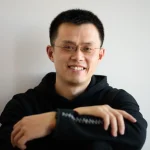Agave Partners is a cross-border investment bank specializing in the access to the Chinese market for innovative product companies in such domains as Semiconductors, Telecommunications, Data Centres, Artificial Intelligence, Robotics, Automotive and Avionics.
With offices in San Francisco, Beijing and Chicago, Agave Partners represent US and European companies interested in developing strategic partnerships in China for their commercial development and for restructuring their capital. The company realizes Corporate Financing and M&A transactions.
Agave’s ability to source the right strategic partners in China is in their unique blend of banking and operational experiences allowing to align corporate strategies and structure transactions beyond the aptitude of traditional investment banks. Founder and Managing Director Robert Troy tells CEO Today more about it.
Could you tell us a bit about Agave Partners’ M&A practice?
Our M&A practice focuses on mid-market US and European innovative companies, to which we provide our expertise in identifying Chinese industrial groups able to acquire companies whose offering fits the domestic needs.
Our unique positioning in this practice comes from the combination of our effective presence in China with an office in Beijing dedicated to developing strategic relationships with large industrial and private equity groups, and our expertise in technologies at the core of capital-incentive domains that align with the strategic roadmap of these groups.
These are critical ingredients to maximize the outcome of a deal that is beneficial to both parties, while efficiently navigating through the multiple hurdles, be they administrative, financial, or cultural.
Can you detail a recent transaction that Agave Partners advised on? What were some of the issues that you were faced with?
Agave Partners Advisors was mandated by Kalray SA to source a strategic partner in China with interest in using Kalray technology in its application domain and interest in investing in the company.
We prospected industrial groups that we know to be innovation hungry in highly competitive segments of the Chinese market, including data centres, avionics and automotive; searching for a company which can get a strong strategic advantage at adopting Kalray technology for serving its clients.
Because Kalray technology is very advanced, we found various industrial groups in China, among the most sophisticated, curious about it and genuinely interested in discovering how this technology can be put into practice in their product lines; how it offers a discriminant competitive advantage in better serving their clients; and questioning how fast the market can adopt.
On the buyer’s side, we were confronted to the challenge of promoting a disruptive technology and navigating the full cycle of technology assessment in situations involving product designs and many other steps driving to the strategic decision. Our blend of technologists and bankers’ expertise happened to be of critical importance.
On the seller side, we enjoyed a high-level cooperation with an agile client, not short of commitments when extensive travels and endless negotiations were required to match interests, assess the risks, commit on future developments and overall demonstrate a willingness to engage in a powerful but controlled relationship. Our key contributions have of course been to assist in structuring a complex deal negotiated by parties which were not even speaking the same language and belonging to extremely different business cultures. Our multicultural team made of people used to work and deal in Europe, the US and Asia has certainly been the second key factor of success.
What do you think the next 12-24 months hold for the global M&A market?
Antagonist forces are shaping the global technology market. We see growing altogether (i) a renewed interest of corporations for technology innovations, (ii) a levelling of industrial capacities between continents, (iii) a global awareness of not-to-miss massive game-changer disruptions on their reach to maturity in a variety of application domains including but not limited to automotive, robotics, avionics or healthcare, (iv) the adoption by entrepreneurs and CEOs of worldwide reach as a new normal. We also see necessary geopolitics considerations creating a growing level of uncertainties with high potential for delaying the trend toward a global reach.
This push-pull situation makes it extremely difficult to predict what the future might hold, but in the short term, we don’t see any possible inflexion of the growing M&A trend in the technology sector for a variety of reasons.
What are some of the current projects that Agave Partners is working on? What lies on the horizon for the firm in 2018?
Agave Partners is working for entrepreneurs and CEOs having a worldwide development strategy. As long as 2018 is concerned, we are primarily working at increasing our capacities to respond to a fast-growing deal flow of high quality companies which see China as their next frontier.
We also have the ambition to become an investor in our most promising clients. For this purpose, we recently signed an agreement with China Electronic Corporation Corporate Venture and their HDSC branch to launch a multi-corporate fund involving European and American electronic corporations as well. Agave Partners Funds is a work in progress with expectation to be launched in the spring of 2018.










